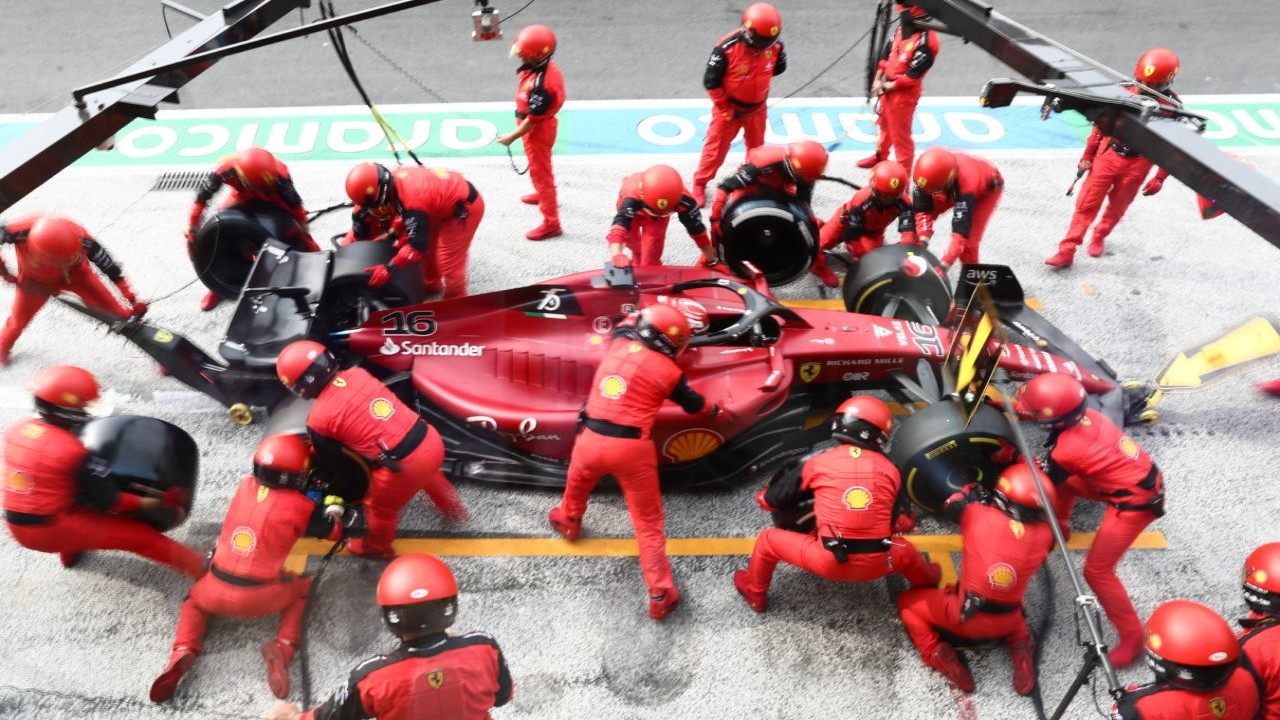F1 Pit Crew Salary: How Much Do F1 Pit Crew Make?
Discover the salaries of F1 pit crew members in 2023; from Crew Chiefs to Tyre Changers, and their critical role in racing success.

In Formula 1, the pit crew plays a pivotal role in the success of a team and its drivers.
These unsung heroes, often operating behind the scenes, ensure that race cars are in peak condition to compete at the highest level.
The salaries of these vital team members reflect the importance and intensity of their roles within the F1 paddock.
F1 Pit Crew's salary
The structure of an F1 pit crew is diverse, with each member playing a specific role, including the crew chief, refueling personnel, tire changers, tire carriers, jack men, wing men, stabilizers, and fire extinguisher men.
These roles are crucial for the smooth operation of a pit stop, where teamwork and efficiency can make the difference between winning and losing.
The annual salary for pit crew members can range widely, from $30,000 for roles such as the fire extinguisher man, up to $1 million for the crew chief, reflecting the varying degrees of responsibility and expertise required.
Additionally, members may receive bonuses for race wins, further incentivizing performance excellence. These professionals are highly skilled and operate in a high-pressure environment, requiring precision and speed.
Below is a table outlining the salary structure for different pit crew roles, including per-race payments, annual salaries, and bonuses for race wins.
| Pit Crew Member | Per Race Payment | Annual Salary | Race Winning Bonus |
| Crew Chief | $10,000 | $1 Million | $5,000 |
| Refueling Person | $5,000 | $350,000 | $2,500 |
| Tyre Changers | $5,000 | $350,000 | $2,500 |
| Tyre Carriers | $3,500 | $270,000 | $2,500 |
| Jack Men | $3,000 | $150,000 | $500 |
| Wing Men | $3,000 | $150,000 | $500 |
| Stabilizer | $2,500 | $90,000 | $250 |
| Starter Man | $750 | $40,000 | $250 |
| Fire Extinguisher Man | $500 | $30,000 | $250 |
The disparity in compensation reflects the different levels of responsibility and skill required for each role.
Teams such as Ferrari, Red Bull, and Mercedes are known to invest heavily in their pit crew, ensuring they are equipped with the best resources and compensated accordingly for their crucial role in the team's performance.
Here are their roles explained:
Crew Chief
The Crew Chief is the leader of the pit crew, responsible for overseeing all operations during pit stops and making strategic decisions. They coordinate the team's activities, ensuring everyone is synchronized and the pit stop is executed flawlessly.
Refueling Person
Note: As of the latest regulations, refueling during races has been banned in Formula 1 since 2010. However, the Refueling Person was historically responsible for managing the fueling apparatus and ensuring the car was refueled quickly and safely during pit stops when it was allowed.
Tyre Changers
The Tyre Changers are tasked with removing the old tires and fitting new ones during a pit stop. This role requires precision and speed, as they must use pneumatic guns to quickly unscrew and screw in the wheel nuts.
Tyre Carriers
Tyre Carriers work closely with the Tyre Changers, handing them the new tires and taking away the old ones. This role is crucial for minimizing the time taken for tire changes, requiring coordination and physical strength.
Jack Men
Jack Men are responsible for lifting the car off the ground so that the Tyre Changers can replace the tires. There are usually two Jack Men, one at the front and one at the rear of the car, using specialized hydraulic jacks.
Wing Men
Wing Men adjust the front wing angle during a pit stop based on the driver's requests. This adjustment can alter the car's aerodynamics, affecting its handling and performance on the track.
Stabilizer
Stabilizers ensure the car is steady and secure on the jacks during the tire change, preventing any movement that could slow down the pit stop or, worse, injure someone in the pit.
Starter Man
The Starter Man holds a portable starter device in case the car needs to be restarted during or immediately after a pit stop. This role is crucial for preventing race-ending issues if the car stalls in the pit box.
Fire Extinguisher Man
The Fire Extinguisher Man is equipped to handle any fire emergencies during a pit stop. While fires are rare, the presence of highly flammable fuel and hot components makes this role a critical safety measure.
Each member of the pit crew plays a vital role in the smooth execution of a pit stop, with tasks carefully choreographed to ensure the car spends a minimal amount of time stationary.
Why do we need to change tires mid-race in F1?
Formula 1 is not just a test of speed but also a strategic battle that requires meticulous planning and execution from both the drivers and their teams.
One of the critical elements of this strategy involves tire changes during the race also called the pitstop.
Tires are the only point of contact between the car and the track, and their condition significantly affects the car's performance in terms of speed, grip, and safety. Here's why tire changes are crucial in F1:
Tire Degradation
Tires wear down due to the extreme conditions they're subjected to, including high speeds, forces, and temperatures. This wear leads to a loss of grip, which can increase lap times and make the car harder to handle.
Different Tire Compounds
F1 uses different tire compounds that offer varying levels of performance and durability. Teams must choose the right moment to switch between these compounds to optimize their race strategy, balancing speed with the tires' lifespan.
Safety
Worn tires are not just slower; they're also dangerous. They can lead to accidents by failing (e.g., punctures or blowouts) or by reducing a driver's ability to control the car, especially in corners or under braking.
Regulations
F1 regulations often require the use of multiple tire compounds during a race, forcing teams to make at least one pit stop. This rule ensures that strategy plays a key role in the race outcome.
Weather Conditions
Changes in weather, such as unexpected rain, can necessitate a switch to wet-weather tires. Similarly, drying conditions will see teams moving back to slicks, requiring careful timing to maximize performance.
The Impact on Race Strategy
Choosing when to pit for tire changes is a critical strategic decision. Pit at the wrong time, and you can lose positions; pit at the right time, and you can gain a significant advantage over your competitors.
This strategy involves predicting tire performance, understanding how tires behave on the current track conditions, and reacting to the actions of other teams.
This aspect of the sport exemplifies why F1 is as much a battle of wits and strategy as it is of speed and skill.





 JOIN OUR WHATSAPP CHANNEL
JOIN OUR WHATSAPP CHANNEL






























































